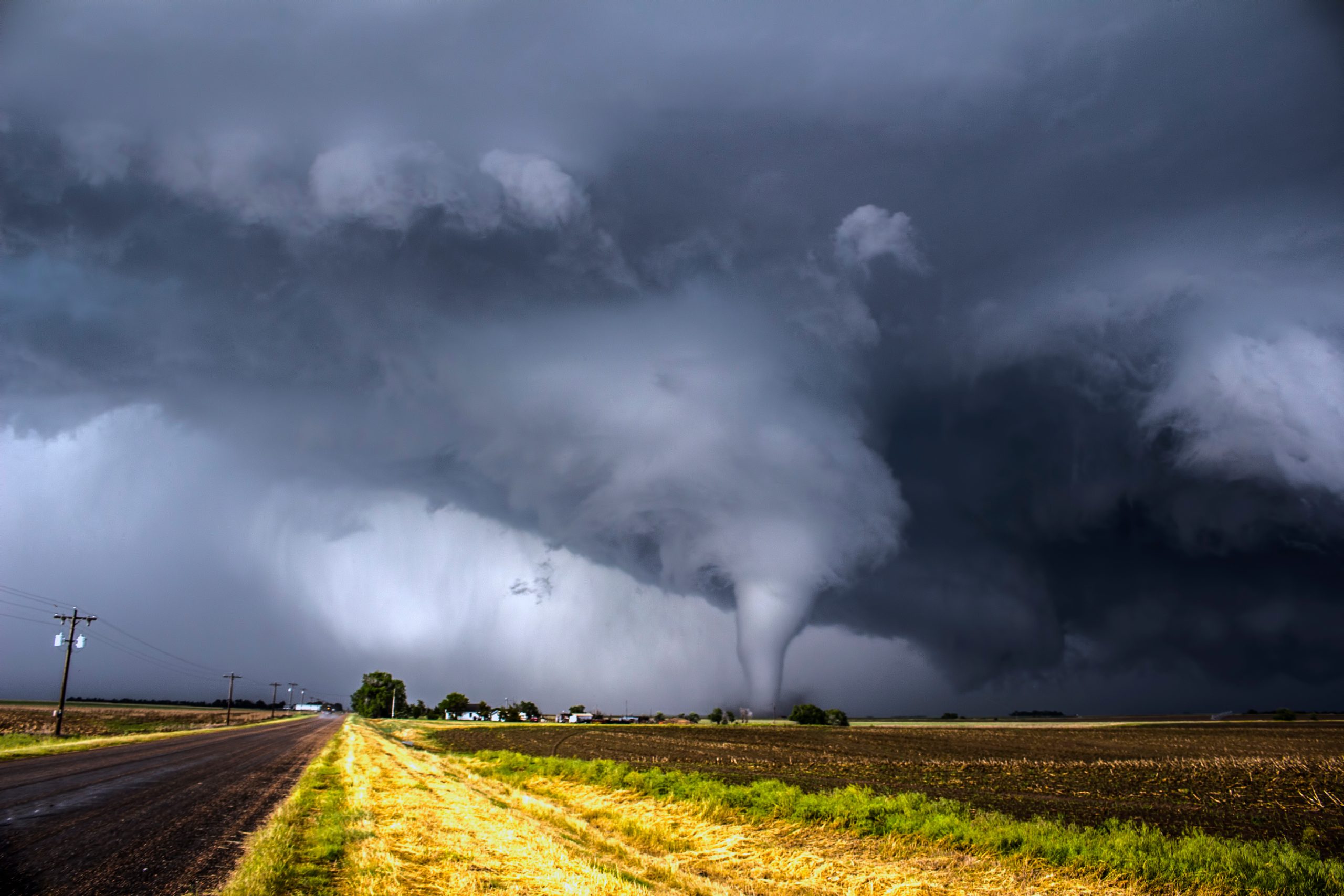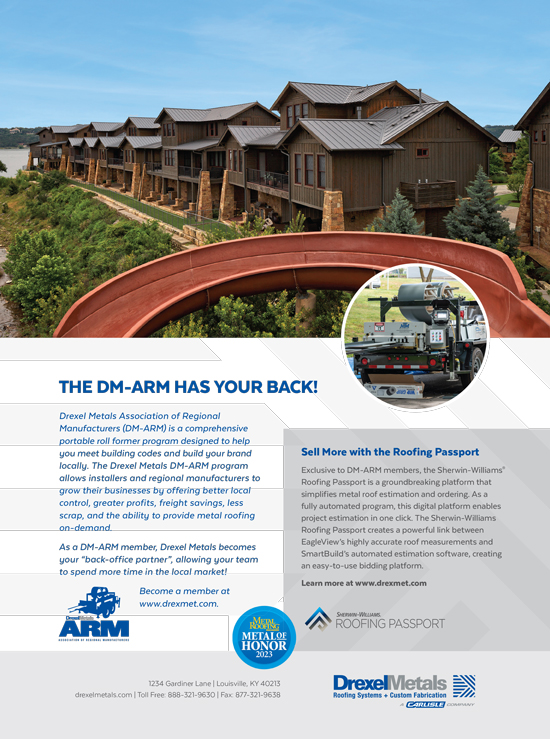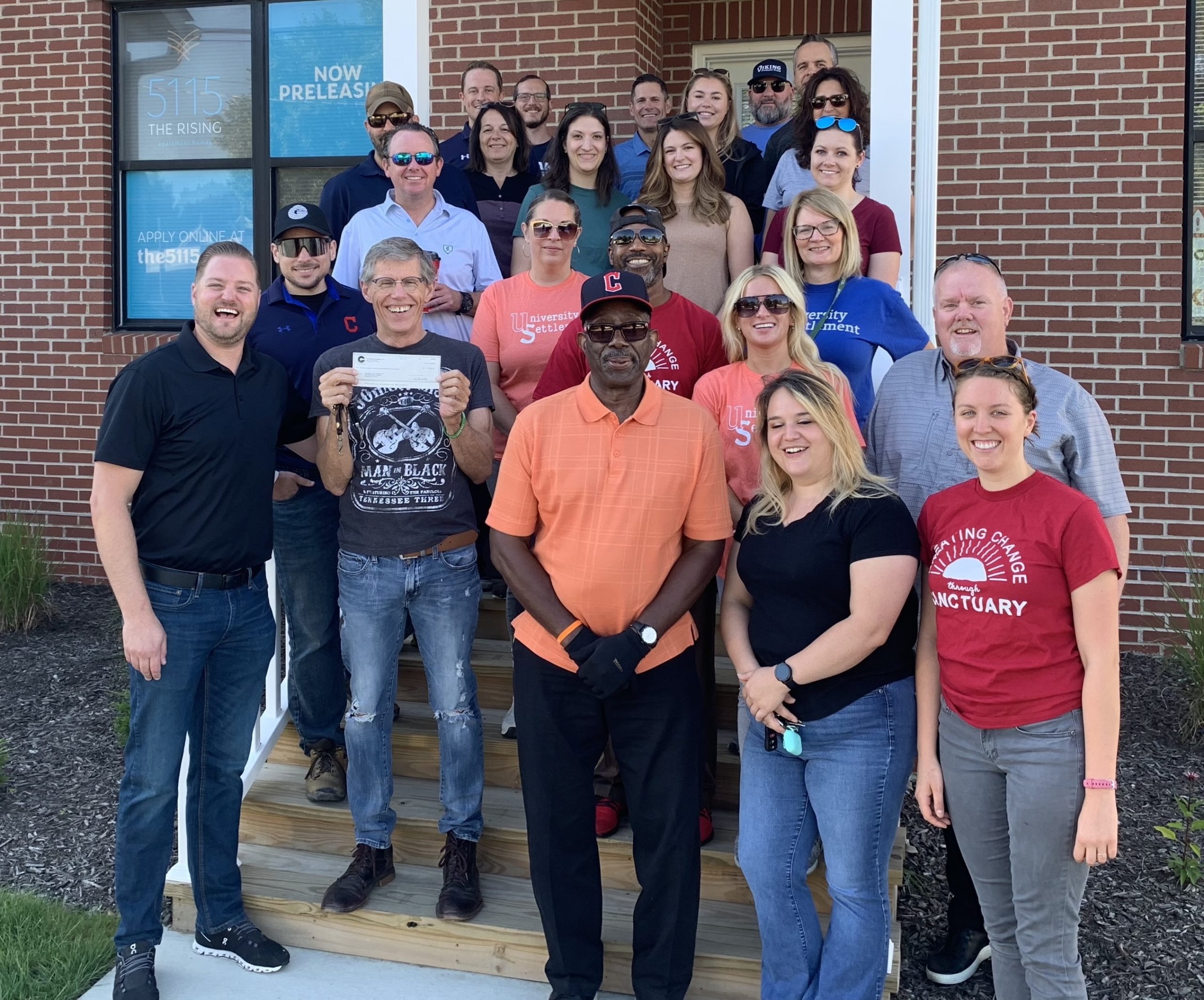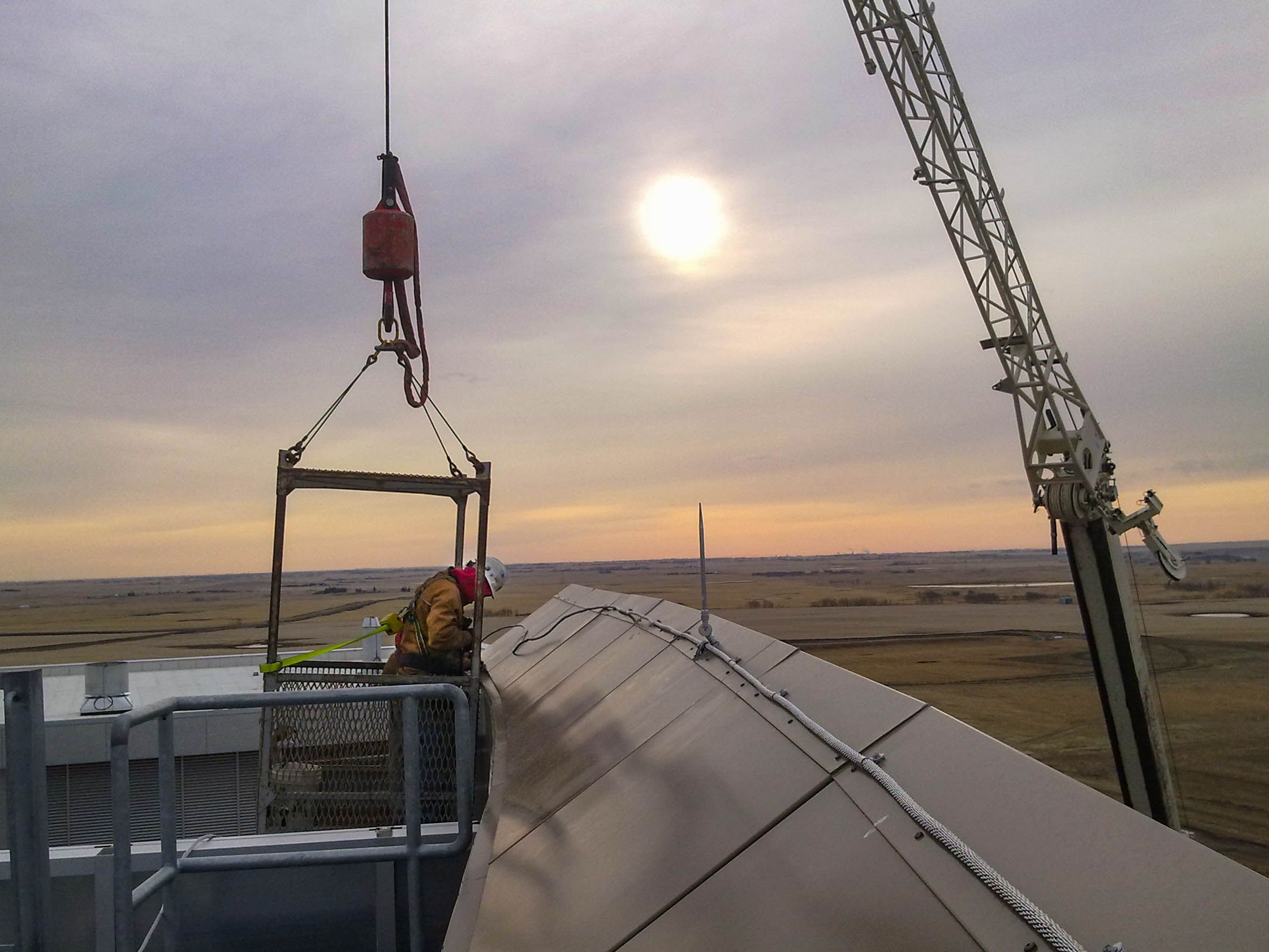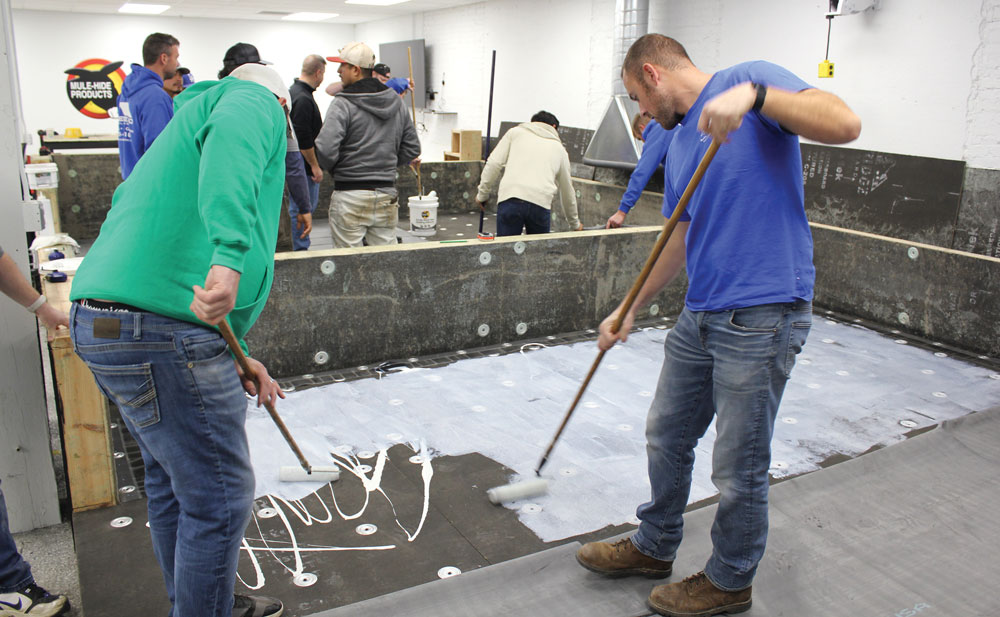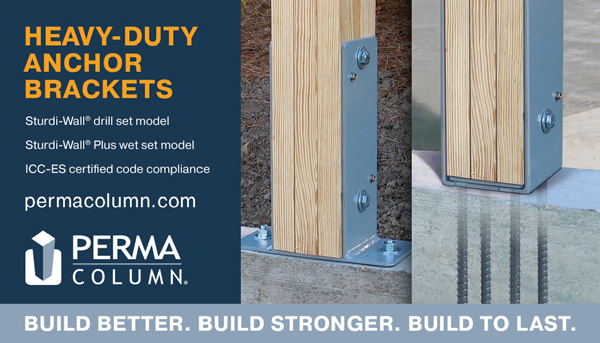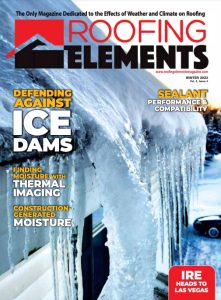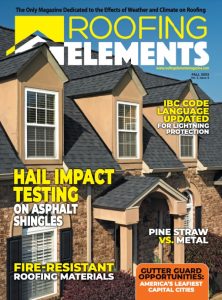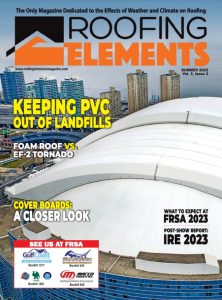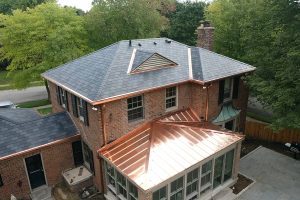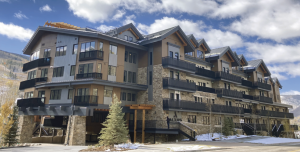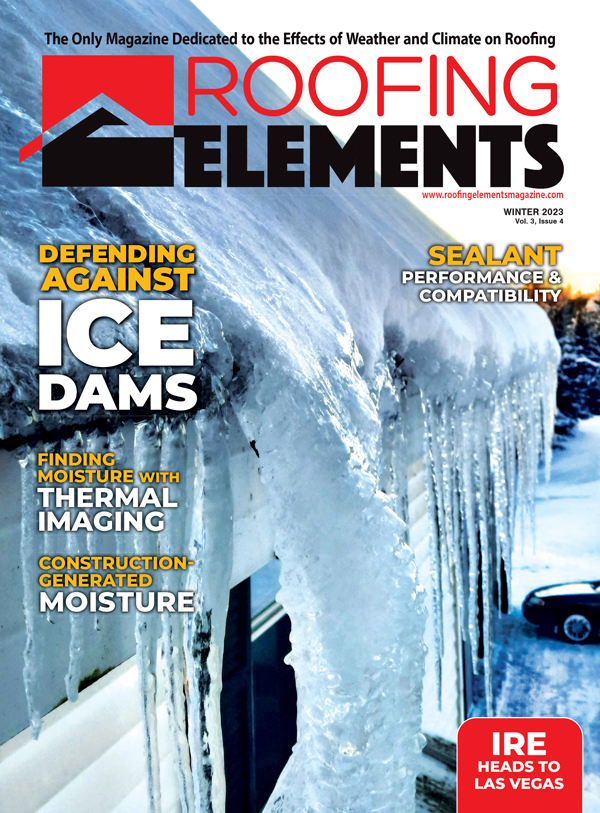By Advanced Roofing & Construction, LLC
Tornadoes can strike suddenly and cause damage to homes, vehicles, trees, and other structures. Roofs are particularly vulnerable to the power of tornadoes, and some of the most common roof damages caused by tornadoes include tear-offs or uplifts caused by wind, broken shingles and ruined granules caused by hail, and compression or severe punctures caused by flying debris. We’ll delve deeper into each of these damages and the specifics behind how they can impair a roof. We’ll also offer advice on what you can do to temporarily or permanently fix them.
Wind Damage
Tear-Offs
Perhaps the most visible type of wind damage is the tear-off, which happens when high winds or pressure vacuums caused by winds are so strong that they actually tear the roof off. In some cases, the entire roof will come off, but in others, only a part is ripped away.
Shingles are most likely to be affected by tear-offs, as strong winds can easily pull them away from the rest of the roof. The decking of the roof can also be torn away. In any scenario, tear-offs must be fixed immediately to avoid water seeping into the home or building.
An alternative if the roof can’t be repaired at the moment is to cover the home or the damaged parts of the roof with a tarp until it can be properly repaired.
The best way to repair tear-offs is to install a brand-new roof. If only a part of the roof was torn off, there may still be some water damage, or maybe the decking has been impaired. In any case, the easiest path will probably be to tear off the rest of the roof and replace it entirely.
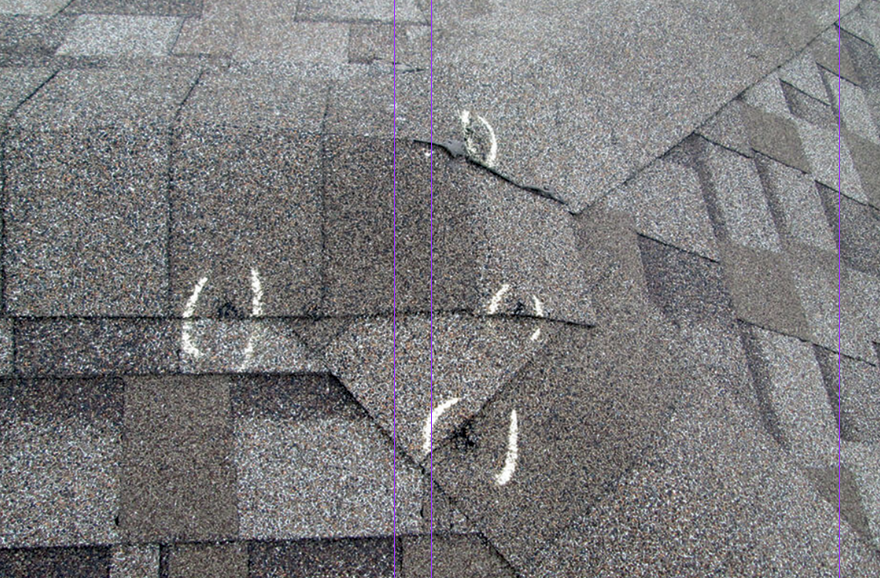
Asphalt shingle damage caused by flying debris.
Photo courtesy of Advanced Roofing & Construction, LLC
Uplifts
Another common occurrence during tornadoes is damage by uplift. Uplifts on a roof are not as visible as tear-offs and are more likely to affect older homes, which may not have been built with wind strapping. Instead of fully tearing off the roof or part of it, uplifts caused by high winds or intense pressure from the storm lift up the edges of the roof.
What makes uplifts particularly dangerous and hard to see is that the roof might settle back in place once the storm is over. If the edges are not obviously curled over or pulled up, some signs to look out for when checking if an uplift occurred include cracked or broken shingles and damage along the eaves. Uplifts are easier to repair than tear-offs because they cause less damage. Simply replacing the broken shingles should be enough to resolve the issue, but it’s also worth checking for water damage in case a more comprehensive roof repair is needed.
Hail Damage
Coating Removal
When a tornado hits, it’s not uncommon to find hail coming with it. While small pieces of hail are generally harmless, once they reach a diameter of 1 inch, they can become dangerous. Asphalt shingles are particularly susceptible to damage, which often includes the removal of the protective coating of granules. Once these granules are gone, shingles essentially can no longer complete their purpose, and the roof can quickly deteriorate and suffer leaking, mold, and other types of water damage. The easiest way to determine if the coating has been removed is to look on the ground and in the gutters. If small pieces of gravel are present, the shingles need to be replaced.
Dents or Holes in the Shingles
Shingles can also sustain breaks, splits, cracks, dents, and holes in addition to losing their protective coating. While these types of damage can also cause water damage, they are more obvious and are often noticed more quickly than a coating removal.
As long as the decking underneath the shingles is not also punctured or dented, the ruined shingles can simply be replaced. In the case of damaged decking or a majority of broken shingles, it might be more prudent to replace the whole roof and take steps to prevent future tornado damage, such as choosing stronger materials, adding multiple roof slopes, or connecting the roof to walls.
Flying Debris
Compression
Flying debris can hit roofs hard, even if it’s a small piece of wreckage. The force behind a piece of debris really determines how much it will damage the roof, although the size can also determine how much damage will occur. For example, if a large branch hits a roof with a lot of force behind it due to high winds, it can compress the shingles and remove the layer of granules which protect them. Depending on the level of compression, it may not be obvious that a roof has suffered this type of damage.
Keep an eye out for shiny spots on the shingles or pieces of gravel in the gutters, as these are signs of compression which are easier to notice. In most cases of compression, replacing individual shingles can resolve the issue quickly and efficiently.
Severe Punctures
On the other hand, flying debris can cause more serious and obvious damage to a roof, such as severe punctures. Debris can impale roofs and cause leaking, dents, or even caved-in roofs. Depending on the severity of the damage and if the decking was affected, a new roof might be in order, or it might be a simple fix to replace broken or punctured shingles.
Conclusion
Tornado roof damage is serious and should be repaired immediately. Although damages caused by wind, hail, and flying debris are among the most common, even normal storm occurrences such as rain can weaken roofs.
While not every type of damage is as debilitating as others, and some can wait longer to be repaired, tornadoes can hit roofs hard and present a dangerous scenario if the roofs are not fixed as soon as possible. l
About the Author: Advanced Roofing’s knowledge and expertise in construction and their experience working with a multitude of insurance companies allow them to manage both ends of the roofing industry and save clients the headache of navigating insurance as well as making sure the work is done correctly.

